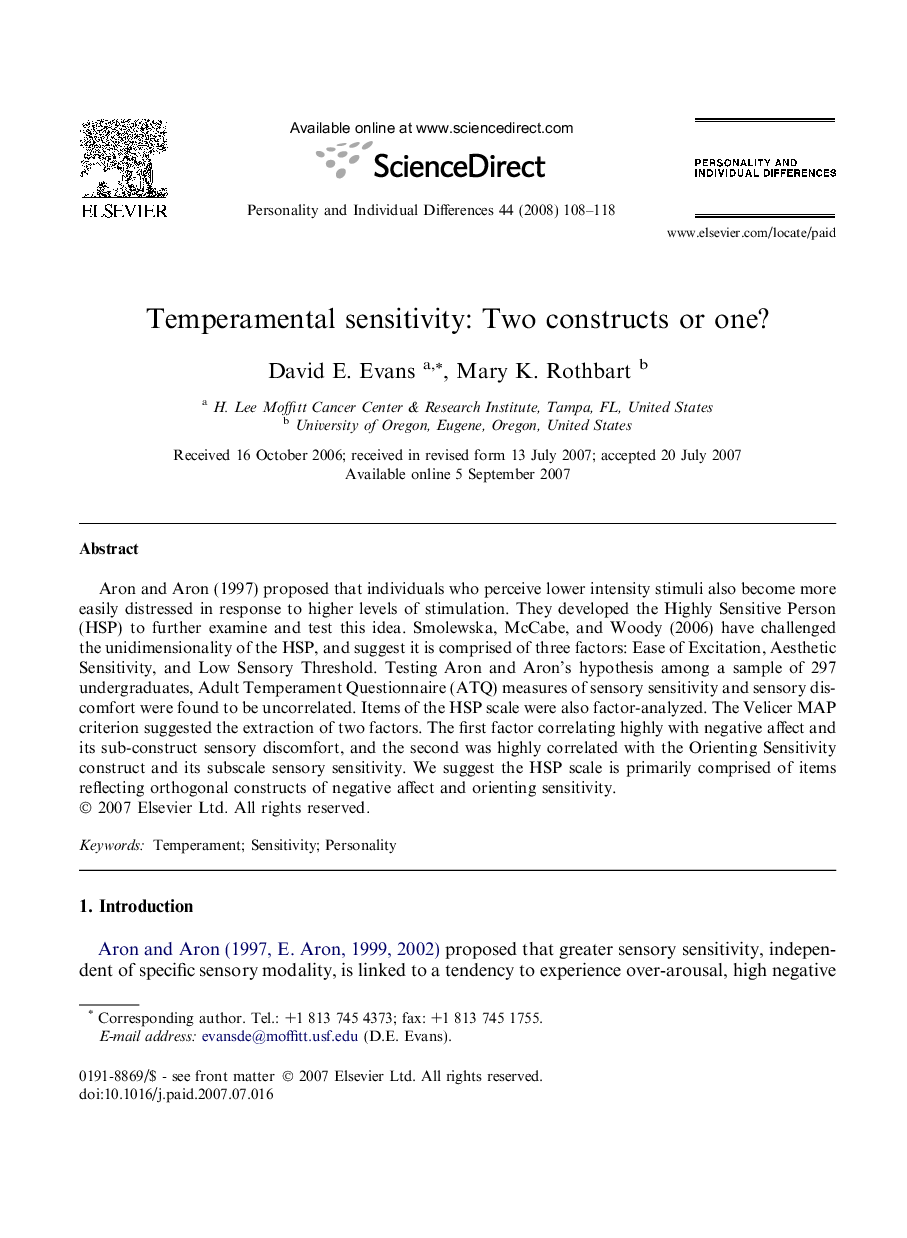| Article ID | Journal | Published Year | Pages | File Type |
|---|---|---|---|---|
| 893065 | Personality and Individual Differences | 2008 | 11 Pages |
Aron and Aron (1997) proposed that individuals who perceive lower intensity stimuli also become more easily distressed in response to higher levels of stimulation. They developed the Highly Sensitive Person (HSP) to further examine and test this idea. Smolewska, McCabe, and Woody (2006) have challenged the unidimensionality of the HSP, and suggest it is comprised of three factors: Ease of Excitation, Aesthetic Sensitivity, and Low Sensory Threshold. Testing Aron and Aron’s hypothesis among a sample of 297 undergraduates, Adult Temperament Questionnaire (ATQ) measures of sensory sensitivity and sensory discomfort were found to be uncorrelated. Items of the HSP scale were also factor-analyzed. The Velicer MAP criterion suggested the extraction of two factors. The first factor correlating highly with negative affect and its sub-construct sensory discomfort, and the second was highly correlated with the Orienting Sensitivity construct and its subscale sensory sensitivity. We suggest the HSP scale is primarily comprised of items reflecting orthogonal constructs of negative affect and orienting sensitivity.
